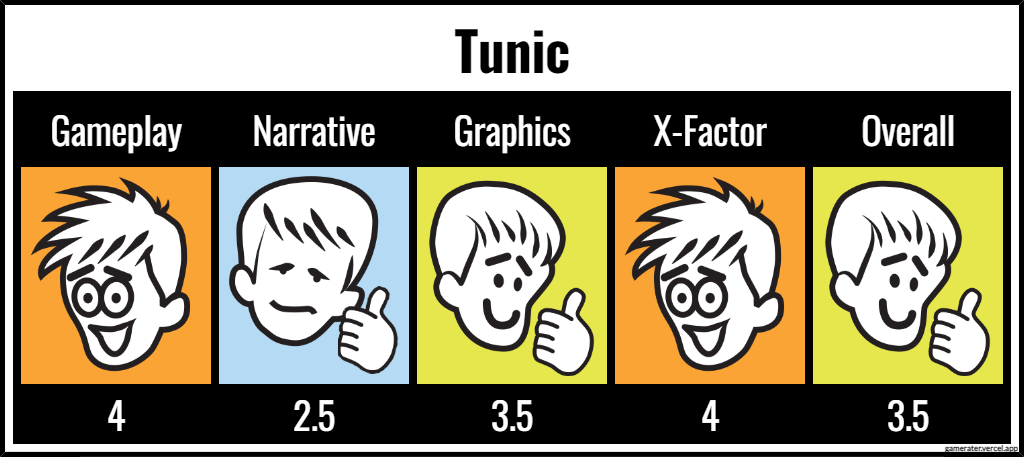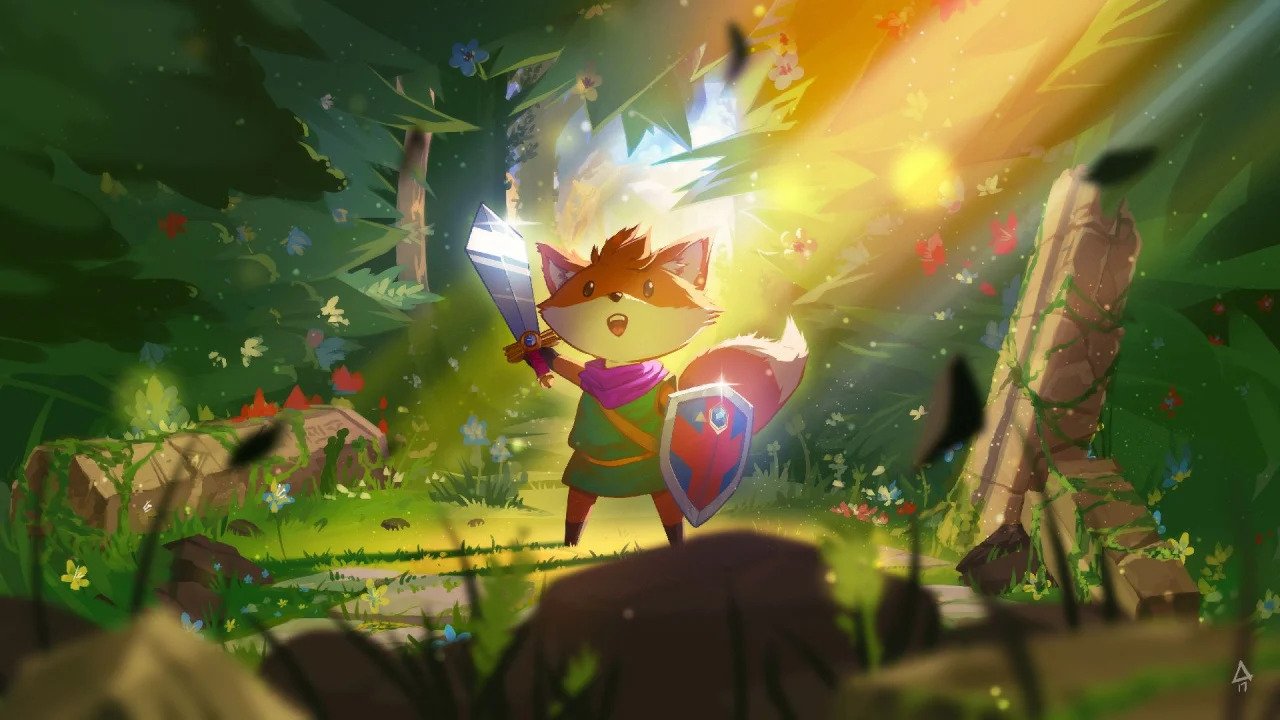Tunic is a love letter to the original NES Zelda game. It is an ode to the days gone when video games were also physical experience. When instruction manuals were integral to your success in progressing through the game. After spending time going through all the game has to offer, it is easy to understand that Tunic aims to recapture that experience.
Introduction to instruction
Upon starting your adventure, an unknown little fox friend who seems to be cosplaying as Link from The Legend of Zelda series gets up from the ground and you are immediately in the game. No introduction, no story, just go ahead and do what you will. Something that is a bit of a rarity today but was commonplace a long time ago.
With a little experimentation and button pushing, it seems your only options for controls are walk around and roll. Exploring the immediate area reveals some paths blocked off by bushes, some slime-like enemies, and rewards you with a stick to attack them with. Thusly you are introduced to the basic premise of the game: explore the area and find items letting you explore previously inaccessible areas. After progressing a bit further along, you come across a glowing object on the floor. Upon picking it up you are presented with some instructions on how to perform basic actions in the game. In the lower corner a lone number is present. You have the ability to flip this bit of instruction to see some more information about the controls of the game. There is another number that is sequentially higher. Here is what I believe is the main draw of the game. A page from what appears to be an instruction manual.
A glimpse into the past
Tunic feels like a game that was made for a pretty specific audience. The surface level gameplay is a pretty standard isometric action-adventure game with some not to complicated puzzle solving. You explore around a world with areas that are gated off by something you haven't found yet, and as you find items more and more of the world is discoverable. The combat is very simple, but the enemies and bosses can be very tough requiring usually several attempts to fell them. Combat is made easier by offering many collectables that directly impact your offensive and defensive stats. There are plenty of hidden collectable items strewn throughout the world for you to find.
What Tunic does differently to set it apart is really the meat of the game. Its world and challenge is molded by the NES era adventure games. Little to no information given to you in game, tons of secrets for you to find, and rooms of enemies that you cannot simply mash attack to get through. This is all supplemented by you finding piece by piece the in game instruction manual. A manual that has been very carefully crafted to mimic the manuals of games from long ago. Full color illustrations, maps marked up by pen on where to find secrets, notes about what items do. Each time you find a page from the manual a new piece of information about the game is revealed to you. It could be the map of an new area, information about trinkets you have collected that up until this point you were guessing what they might do, or simply just a short piece of the story. From the manual flipping between the pages and the glow of a CRT while consulting it, this in game manual truly captures the experience of what it was like playing a video game in an time long before information was easily accessible.
One part of the game I want to draw specific attention onto are the secrets. Tunic is chock-full of collectables and secrets to discover. One great thing about it is the varying level of how hidden these are. Some are shown in plain site, some use the isometric nature of the game to hide them, others are behind a totally unassuming wall that you can blow up. The game pushes and rewards you to really scour the various areas. However, it isn't all just combing the overworld. There are puzzles written in the manual made for you to decipher. The game has some hidden spots that are oddly empty that eventually make sense after figuring out what are seemingly random pen scratchings on various pages throughout the manual. There is a ton to discover and I would encourage you to try and figure things out for yourself. They are all within your reach and may require a little time of thinking or trying different things out.
Conclusion and recommendations
Overall Tunic was a great experience. It certainly surprised me with what it was doing after about an hour of beginning the game. I never got bored during my play through and none of the areas in the game dragged on for too long. There is plenty of content within the game and it sits at that nice 12-15 hour mark (my 100% play through took roughly 20 hours).
There is a enough variety in the environments, enemies, and boss fights that things never become stale. The game controls well, and while presents a challenge at times, is very fair and not so difficult that I was frustrated with it. I will say that the enemy pathing and geometry of the environments can be a little janky at times. There was one instance at the very beginning of the game where I soft-locked myself on a platform. It isn't the most polished game ever, but it is excusable as these issues were few and far between.
I would certainly recommend trying it out. It has a reasonable indie game price point of $30 (or free on game pass) and is well worth the money. I would give a small caveat however, as it certainly won't be for everyone. Tunic does not hold your hand and while does offer direction, it still expects you to explore and figure many things out for yourself. Many of the puzzles and battles left me very satisfied while some of the optional ones left me scratching my head. This game is truly reminiscent of when children would share stories about crazy secrets in a game on the schoolyard. A time when you could not fact check people and either believed their stories of finding hidden treasures or not.

